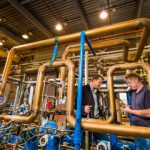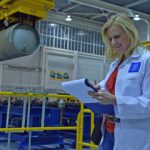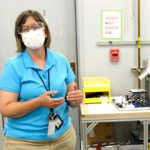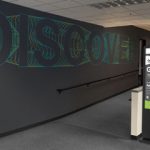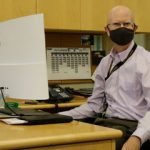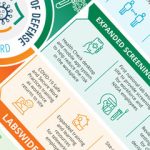NM companies may receive up to $150K in technical assistance
Eligible New Mexico companies have submitted statements of intent to work with scientists and engineers at Sandia or Los Alamos national laboratories through the Technology Readiness Gross Receipts Tax Credit Initiative. The new program allows selected companies to receive up to $150,000 in direct technical assistance per year for prototyping, proof-of-concept, field demonstrations, technical validation, testing and development or other activities.
Sandia joins national center for quantum computing research
Sandia will serve as the leading partner in one of five national research centers for quantum information science established by DOE in August. The Quantum Systems Accelerator is a multi-disciplinary team comprising dozens of researchers from 15 labs and universities.
How to multitask when nuclear nonproliferation is on the line
New cognitive science research from Sandia shows that while maps can help you identify landmarks while being escorted, using one also limits situational awareness and knowledge of surroundings not on the map. This finding is one of several coming from a three-year project that paired cognitive scientists and nuclear safeguards experts to conduct human performance tests and develop recommendations for inspectors.
Marshaling resources to fight COVID-19
As Sandia and the nation came to terms with a new, socially distanced reality, researchers within the Labs’ Integrated Security Solutions Division were working to understand the biology of the novel coronavirus, learn how the human body responds to infection by SARS CoV-2 and model how COVID-19 spreads in a population.
Confronting COVID-19 and getting back to work — together
The novel approach of Integrated Service Delivery being practiced in several centers within Sandia’s Integrated Security Solutions Division was tested to its utmost this year, as departments had to suddenly figure out how to accommodate a remote workforce and then just as suddenly overcome dozens of challenges to bring people back to work safely on site.
California site expands footprint
To accommodate Sandia's significant increase in hiring to meet mission needs coupled with the need to ensure workforce safety amid the pandemic, leaders at the Livermore site are taking a multipronged approach, including continued telecommuting, creating flexible “kiosk hubs,” constructing new facilities and temporarily leasing office space near the campus.
A year of change
Lab News sat down for a conversation with Associate Labs Director Andy McIlroy, head of the Integrated Security Solutions Division, as he starts his second year in that role following a year permanently marked by a new reality for Sandia and the nation.
COVID-19 defense: Sandia’s in-depth approach
Sandia is taking an in-depth, layered approach to combating the spread of COVID-19. As the nation navigates through the COVID-19 global health crisis and as more people come on-site, we want our workforce to know what we do to prepare and what to expect.
COVID-19 came through the door
Despite following pandemic restrictions both in and outside his home, Associate Labs Director Scott Aeilts recently was diagnosed with COVID-19, following a visit from a family friend. Describing his experience, Scott discusses the important role adhering to Sandia's COVID-19 protocols plays in protecting the workforce.
Rose Gottemoeller: The importance of science diplomacy
Rose Gottemoeller spoke to Sandians in a video conference on July 28 in honor of the 25th anniversary of the Labs’ Cooperative Monitoring Center. The talk was part of Sandia’s National Security Speakers Series.
